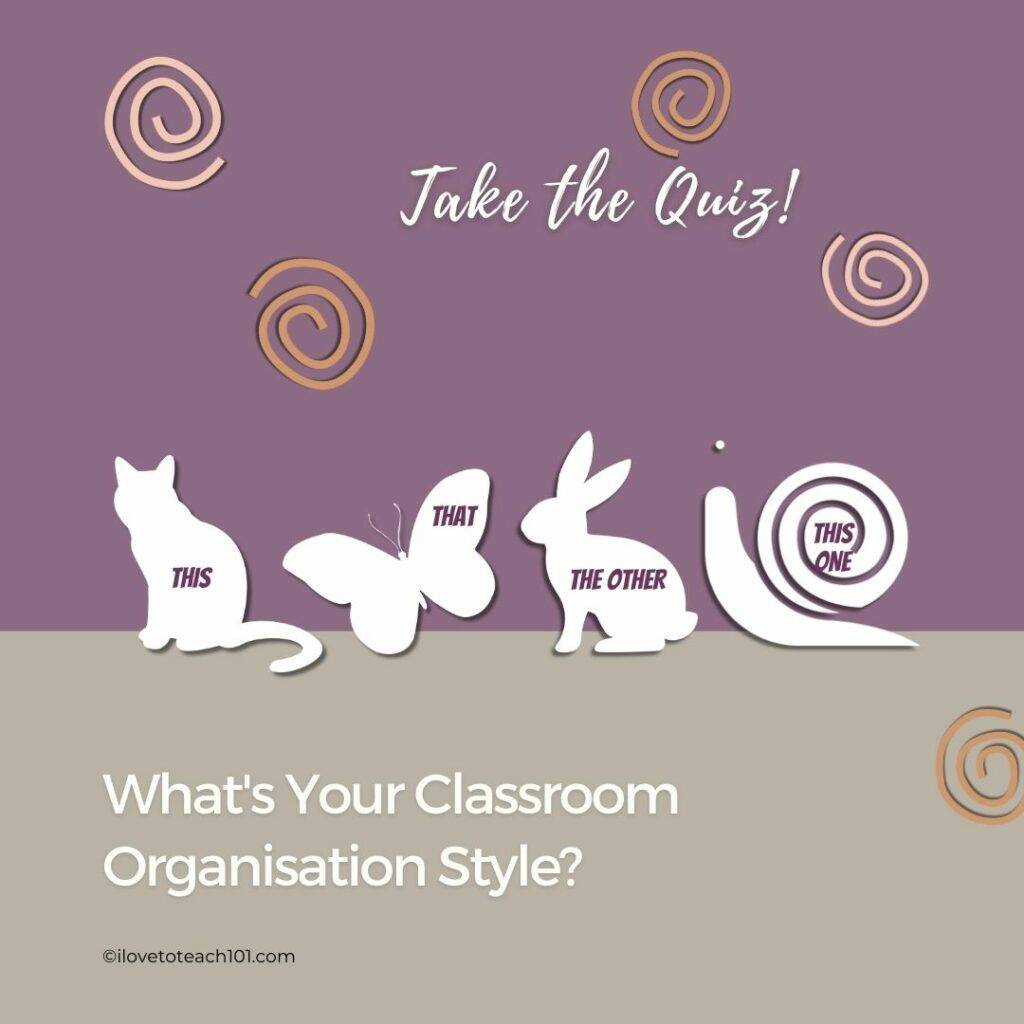Stay organised: 7 smart ways to do it

Staying organised in the classroom isn’t just about keeping things tidy—it’s about saving time, reducing stress, and making your teaching day run more smoothly. A well-organised teacher doesn’t just survive the school year—they thrive in it. Learning how to stay organised can make a huge difference in your daily routine.
Imagine walking into your classroom, knowing exactly where everything is, with no last-minute scrambling to find that missing worksheet or whiteboard marker. It’s not about perfection—it’s about creating systems that work for you so you can focus on teaching, not tidying. When you stay organised, your day runs more smoothly, and you can spend more time doing what truly matters—teaching and inspiring your students.
I’ll be honest, I wasn’t always an organised teacher. But once I started putting a few smart habits into place, I noticed a difference—less stress, better student engagement, and no more panicked searches for lost supplies five minutes before a lesson.
The best part? You don’t need a major overhaul. Small changes can make a big impact. Here are seven simple ways to stay organised in the classroom—without adding extra work to your plate!
1. Focus on One Goal at a Time
Trying to do everything at once? That’s a recipe for frustration. Instead, tackle one goal at a time. Each day, pick one task that’s been nagging at you and make it your priority. Maybe it’s finally sorting that paper pile or setting up a better system for collecting student work. The key is to focus your energy, finish that one task, and build momentum from there.
Remember, learning to stay organised is a marathon, not a sprint. Small wins add up!
2. Do It Now, Not Later
We all know how easy it is to push small tasks aside. “I’ll file that later.” “I’ll put those books away tomorrow.” But those little things pile up fast, turning into a mountain of chaos before you know it.
A simple rule: if it takes less than two minutes, do it now. Put supplies back immediately, answer that quick email, or jot down a reminder instead of trusting your brain to remember (spoiler: it won’t). Taking action in the moment helps you stay organised and prevents an overwhelming backlog later.

3. Make Decluttering a Daily Habit
A cluttered classroom leads to a cluttered mind. Instead of letting mess build-up, spend just five minutes a day tidying up. Get students involved too! Assign simple jobs—one student checks supplies, another tidies bookshelves, and another ensures desks are clear. When everyone pitches in, it becomes second nature.
For yourself, take a few moments at the end of the day to reset your space. Clear your desk, file any loose papers, and prep for the next day. Future-you will thank you in the morning!
I make it a non-negotiable habit to completely clear my desk at the end of each day. If I’m unwell, any ‘Temporary Relief Teacher’ (TRT) knows exactly where to find everything they need. In my relief notes, I include a photo of my TRT drawer, which is located to the right of my desk under a wall bench shelf.
Since my desk also serves as my conference table, I keep it clear so the TRT can use the space in their own way. At the end of the lesson or day, any collected work goes straight into the TRT drawer, keeping everything organised and easy to find when I return.
4. Tame the Paper Chaos and Stay Organised
Paper piles are like gremlins—they multiply when you’re not looking. Instead of letting them take over, create a simple system:
- Sort immediately – Toss junk, file what’s important, and deal with actionable items right away.
- Go digital where possible – Snap a photo of important notices and save them in a dedicated folder.
- Use a “to-do” tray – Instead of random stacks on your desk, have a designated place for papers you need to deal with later.
A little effort now helps you stay organised and saves a lot of stress later.
5. Use Your Whiteboard as a Daily Planner
Your whiteboard isn’t just for teaching—it can be your personal command centre. Use a section of it to jot down important reminders, upcoming tasks, or even your daily to-do list. It’s a simple way to keep everything visible and top of mind without drowning in sticky notes.
If your school uses digital tools, you can also keep a quick note on your laptop or tablet. The key is to have a system that works for you and helps you stay organised throughout the day.
6. Give Everything a Home
A classroom runs smoother when everything has a designated place. Label containers, set up clear routines for where supplies go, and train your students to put things back where they belong. The crayons aren’t nomads—they have a home! Same with books, worksheets, and even those ever-mysterious whiteboard markers.
Assign a special spot for those papers, a waiting room till you’re ready to tackle them. Create simple categories: ‘To Grade,’ ‘To File,’ and ‘To Send Home.’ Having a spot for everything helps you stay organised, meaning less time spent hunting for things and more time focused on teaching.
7. Check In With Yourself Each Week
Organisation isn’t a one-and-done deal—it’s something you tweak and adjust. Set aside a few minutes each week to check in: What’s working? What’s not? Maybe a system needs tweaking, or perhaps you realise you need a new way to track assignments. Be kind to yourself in this process. Learning to stay organised isn’t about being perfect—it’s about finding what works for you and making small improvements over time.

The Joy of an Organised Classroom
It’s easy to feel overwhelmed by everything on your plate. But with small, intentional steps, staying organised becomes second nature. Imagine walking into your classroom each morning knowing exactly where everything is—no scrambling, no stress, just a calm, productive space where both you and your students can thrive.
And if you’re curious about your natural organisation style, take our quick 2 minute quiz! Are you the methodical Professionalist, the ambitious Perfectionist, the relaxed Minimalist, or the spontaneous Procrastinist? Find out and get three fun activities to help your students take charge of classroom organisation too!
Remember, your classroom should work for you—not the other way around. Stay organised, and enjoy the difference it makes!

Can you be more specific about the content of your article? After reading it, I still have some doubts. Hope you can help me.